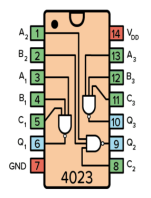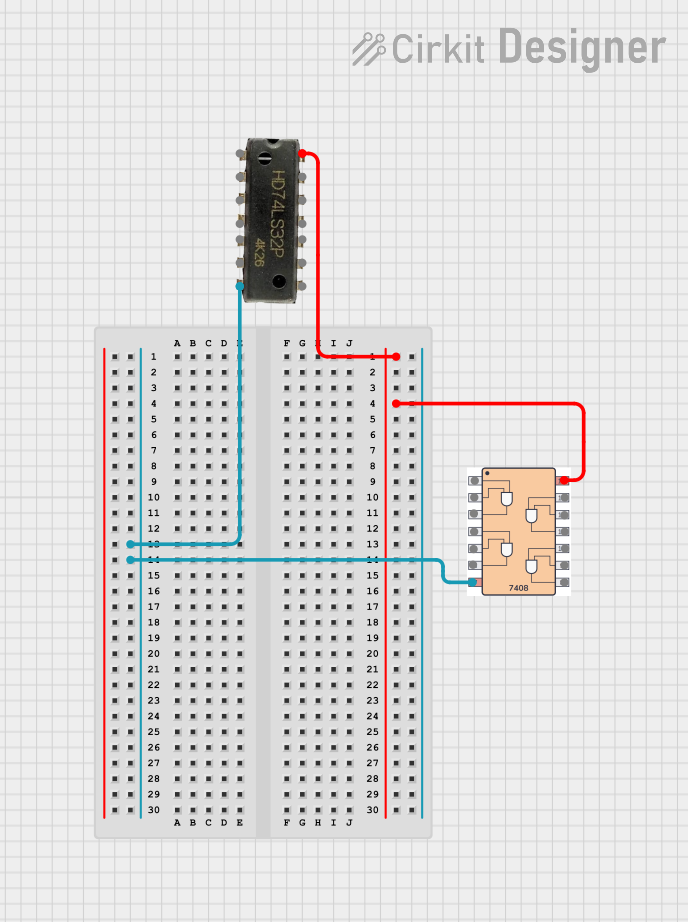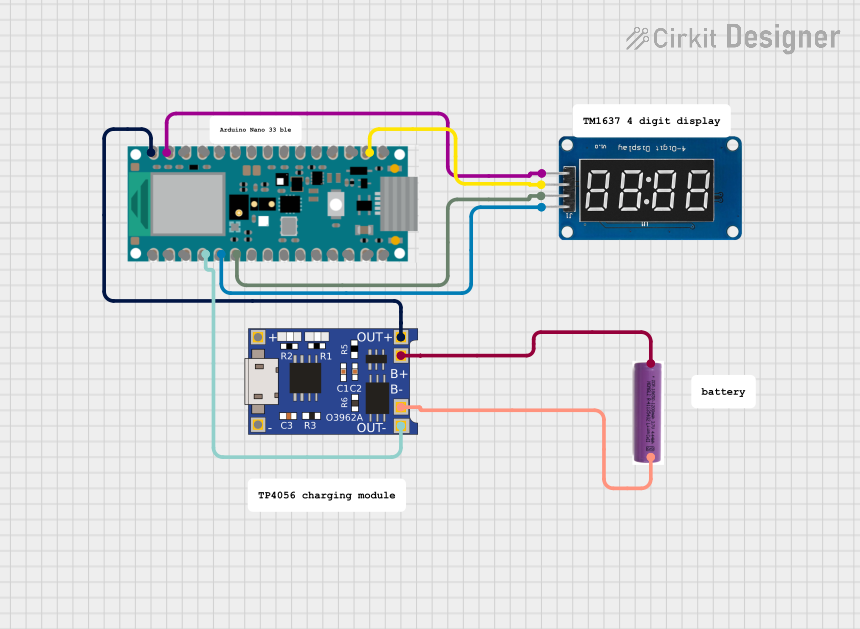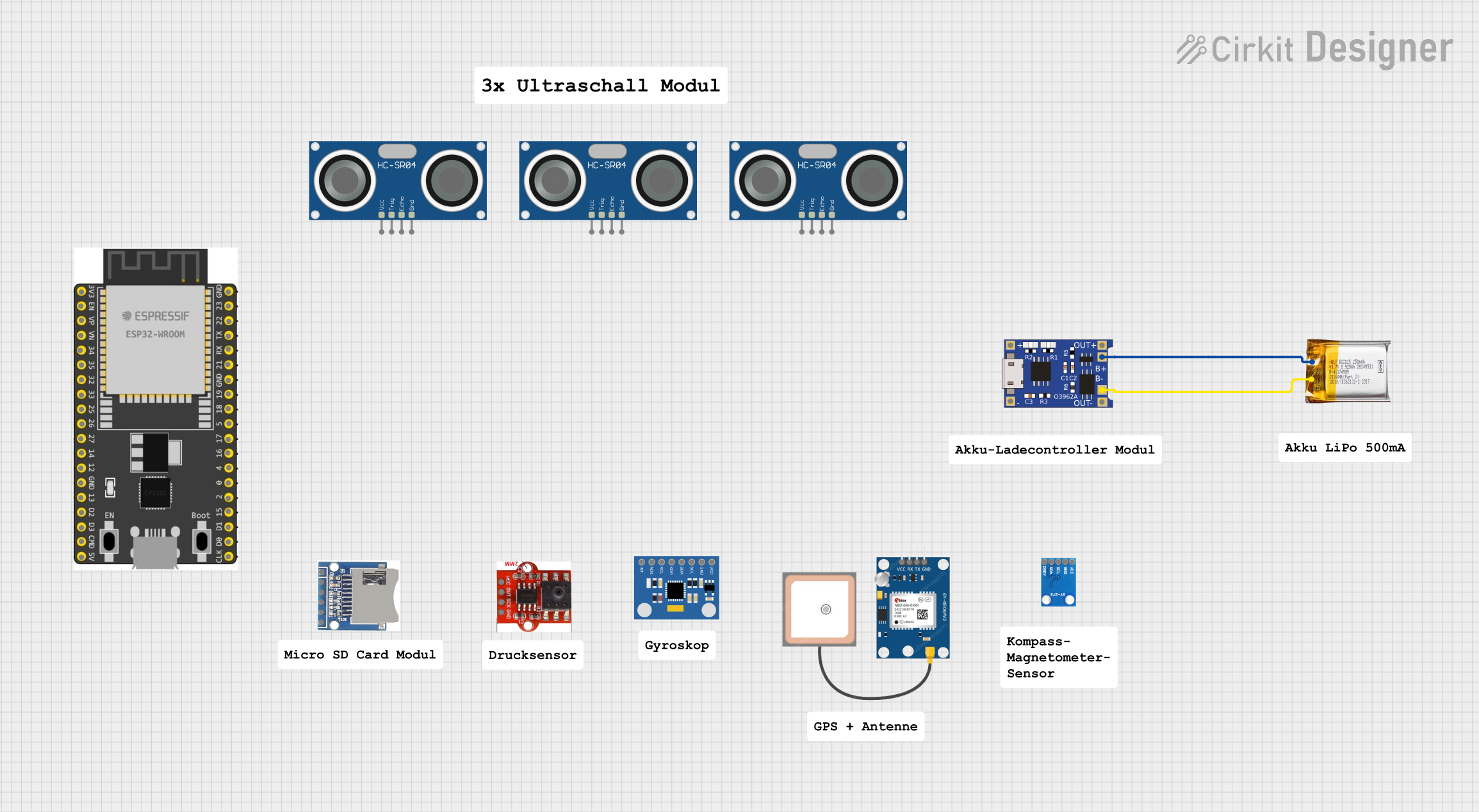
How to Use 4023: Examples, Pinouts, and Specs

 Design with 4023 in Cirkit Designer
Design with 4023 in Cirkit DesignerIntroduction
The 4023 is a dual 4-input NAND gate integrated circuit (IC) that is widely used in digital electronics for implementing various logic functions. This component features two independent NAND gates, each capable of accepting four inputs, making it a versatile choice for compact logic design. The 4023 is commonly utilized in applications such as combinational logic circuits, data processing, and control systems.
Explore Projects Built with 4023

 Open Project in Cirkit Designer
Open Project in Cirkit Designer
 Open Project in Cirkit Designer
Open Project in Cirkit Designer
 Open Project in Cirkit Designer
Open Project in Cirkit Designer
 Open Project in Cirkit Designer
Open Project in Cirkit DesignerExplore Projects Built with 4023

 Open Project in Cirkit Designer
Open Project in Cirkit Designer
 Open Project in Cirkit Designer
Open Project in Cirkit Designer
 Open Project in Cirkit Designer
Open Project in Cirkit Designer
 Open Project in Cirkit Designer
Open Project in Cirkit DesignerCommon Applications and Use Cases
- Combinational Logic Circuits: Used to create complex logic functions by combining multiple NAND gates.
- Data Processing: Employed in digital systems for data manipulation and decision-making.
- Control Systems: Utilized in control logic for automation and robotics.
- Signal Conditioning: Can be used to clean and process digital signals.
Technical Specifications
Key Technical Details
| Parameter | Value |
|---|---|
| Supply Voltage (Vcc) | 3V to 15V |
| Input Voltage (Vi) | 0V to Vcc |
| Output Voltage (Vo) | 0V to Vcc |
| Maximum Output Current | 25 mA |
| Power Dissipation | 500 mW |
| Operating Temperature | -55°C to +125°C |
Pin Configuration and Descriptions
| Pin Number | Pin Name | Description |
|---|---|---|
| 1 | A1 | Input 1 for NAND Gate 1 |
| 2 | A2 | Input 2 for NAND Gate 1 |
| 3 | A3 | Input 3 for NAND Gate 1 |
| 4 | A4 | Input 4 for NAND Gate 1 |
| 5 | Y1 | Output for NAND Gate 1 |
| 6 | GND | Ground connection |
| 7 | A5 | Input 1 for NAND Gate 2 |
| 8 | A6 | Input 2 for NAND Gate 2 |
| 9 | A7 | Input 3 for NAND Gate 2 |
| 10 | A8 | Input 4 for NAND Gate 2 |
| 11 | Y2 | Output for NAND Gate 2 |
| 12 | Vcc | Supply voltage connection |
Usage Instructions
How to Use the Component in a Circuit
- Power Supply: Connect the Vcc pin (Pin 12) to the positive supply voltage (3V to 15V) and the GND pin (Pin 6) to ground.
- Input Connections: Connect your input signals to the appropriate input pins (A1 to A4 for NAND Gate 1 and A5 to A8 for NAND Gate 2).
- Output Connections: Connect the output pins (Y1 for NAND Gate 1 and Y2 for NAND Gate 2) to the next stage of your circuit.
Important Considerations and Best Practices
- Ensure that the input voltage levels are within the specified range to avoid damage.
- Use pull-up or pull-down resistors if necessary to stabilize floating inputs.
- Keep the total output current below the maximum rating to prevent overheating.
- For high-speed applications, consider the propagation delay of the NAND gates.
Troubleshooting and FAQs
Common Issues Users Might Face
No Output Signal:
- Solution: Check power supply connections and ensure that the input signals are within the specified voltage range.
Unexpected Output:
- Solution: Verify the logic levels of the inputs. Remember that a NAND gate outputs a low signal only when all inputs are high.
Overheating:
- Solution: Ensure that the output current does not exceed 25 mA and that the IC is not shorted.
Tips for Troubleshooting
- Use a multimeter to check voltage levels at the input and output pins.
- If using in a breadboard setup, ensure all connections are secure and not loose.
- Consult the datasheet for detailed electrical characteristics and timing diagrams.
Example Code for Arduino UNO
If you are using the 4023 NAND gate with an Arduino UNO, here is a simple example code to demonstrate how to read inputs and control an output based on the NAND logic.
// Define pin numbers
const int input1 = 2; // Input A1
const int input2 = 3; // Input A2
const int output = 4; // Output Y1
void setup() {
pinMode(input1, INPUT); // Set input1 as input
pinMode(input2, INPUT); // Set input2 as input
pinMode(output, OUTPUT); // Set output as output
}
void loop() {
// Read input values
int val1 = digitalRead(input1);
int val2 = digitalRead(input2);
// Implement NAND logic
if (val1 == HIGH && val2 == HIGH) {
digitalWrite(output, LOW); // Output LOW if both inputs are HIGH
} else {
digitalWrite(output, HIGH); // Output HIGH otherwise
}
}
This code sets up two input pins and one output pin. It reads the state of the inputs and applies the NAND logic to control the output accordingly.